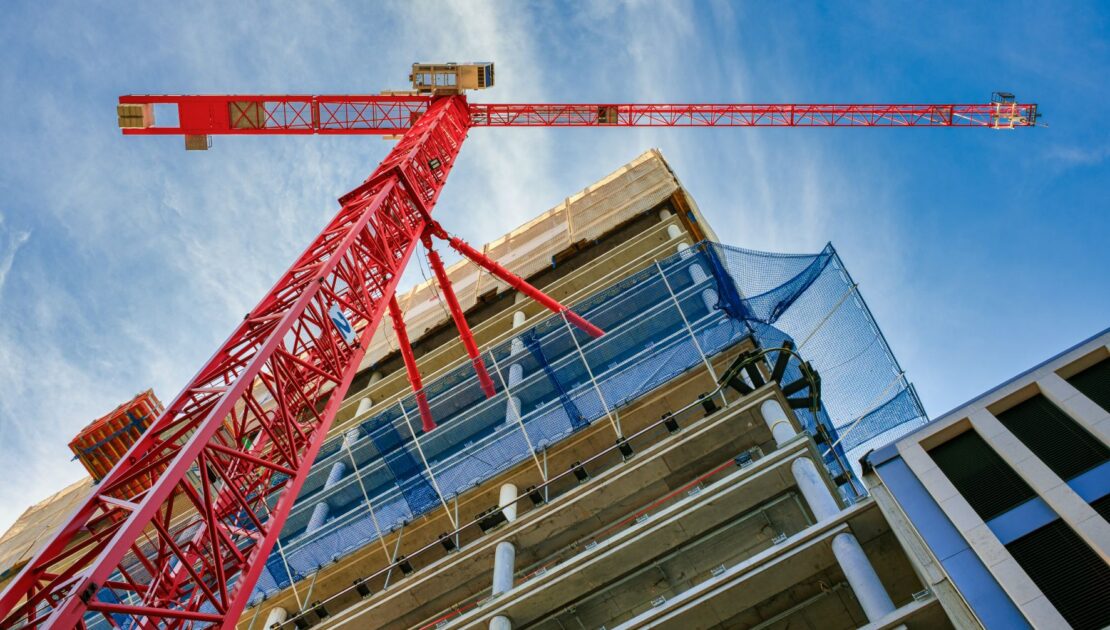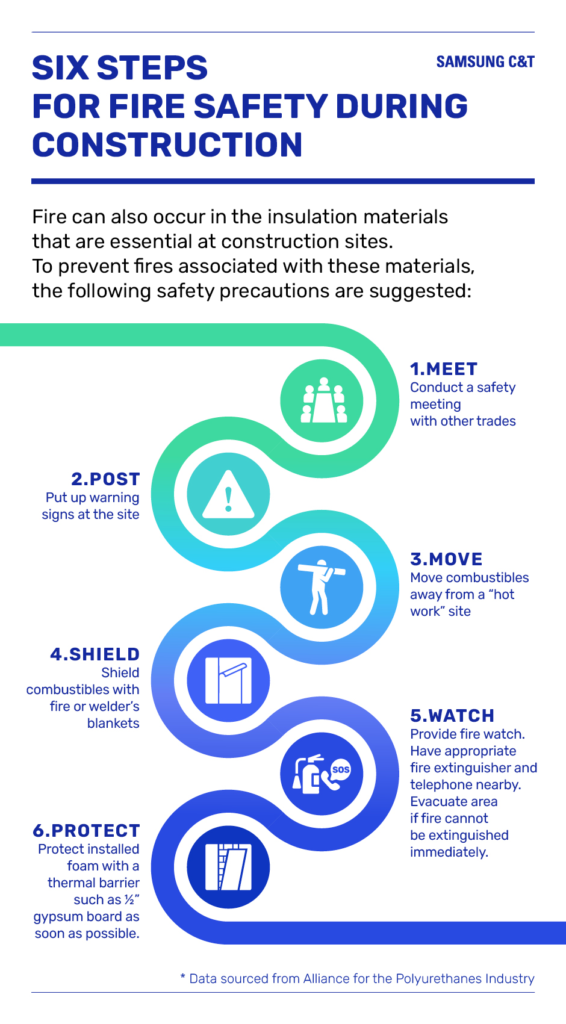Tips on Safe Construction Work in Winter

Safety is always important on a construction site, but that is even truer in winter when snow, ice, rain, high winds, and low temperatures can add to the risk of slipping, falling, or other types of injuries. Even equipment used during winter to warm the air for workers or to help concrete set carries its own potential risk.
The best way to not have an accident is to foresee areas of risk and avoid hazardous situations in advance. In the construction industry, safety must be the highest priority, so here are some safety rules and tips to create safe worksites even in wintertime.
Preparing for heavy snowfalls, low temperatures, and strong winds
During winter, snow can pile up on construction projects underway, damaging exposed surfaces and impeding work. Heavy snowfall can also lead to excess weight on temporary structures, causing them to collapse or deform. Regular snow removal is therefore necessary, but it must be done carefully, because snow can also conceal slipping or falling hazards, like elevator shafts.
Snow turns into ice in extended sub-zero temperatures, leading to slipping and falling risks. Ice must therefore be removed from walkways and roads using calcium chloride, or surfaces must be covered in sand or other grit. Accordingly, there should be storage boxes of sand or salt placed at crucial positions and constantly replenished.
Water pipes can freeze in winter weather, which can lead to burst or leaking pipes. To prevent this, thermal insulation must be placed on water and sewage pipes, especially those exposed to the outside air.
When strong winds blow, especially if snow is falling at the same time, this is not the right time to do construction work outside. If the wind speed exceeds 10 meters per second, stop work at height and tie down any loose materials stored in the open, so they do not blow around and cause injury or damage.
Safety rules for fire and heat accidents
Fire-related accidents are rarer on construction sites than slips and falls, but their impact can be more severe. Storing flammable materials such as paints and glues in close proximity to heat-giving devices, for example welders and heat cutters, is very risky. Especially when working indoors, even a small fire can quickly spread to another area or cause an explosion by igniting flammable fumes. Using heaters to keep warm while working on construction sites in winter without checking for fire risks has also led to accidents. There are therefore some safety points to follow.
Designate a fire prevention program manager responsible for spotting risks and carrying out monitoring and enforcement of fire safety regulations. For example, the positioning of heating appliances must be done with great care. Oil, glue, paint, and other combustible materials must be well out of reach of such devices. When not in use, flammable substances must be carefully stored away. Fire extinguishers and sand buckets for putting out incidental fires must be placed in every workplace, within easy access by workers using heat or flame.
Below are steps to follow when using flammable insulation materials:

Curing concrete in winter
Concrete sets more slowly in temperatures below freezing. One solution is to apply heat to freshly poured concrete to speed up the setting process. For this, fuel-burning stoves have often been used, and the surrounding space is sometimes covered with an awning to prevent this heat from escaping, which also traps carbon monoxide and increases the risk of suffocation.
Therefore, hot air blowers are more recommended than fuel-burning stoves to eliminate the risk of carbon monoxide poisoning when setting concrete. The space must be well ventilated and levels of oxygen and harmful gases must be checked with a gas meter. If work absolutely must be carried out, an air mask or oxygen respirator must be worn.
A supervisor must be onsite to prohibit workers from entering an area where there may be harmful gases or fumes until health and safety checks have been carried out, and all workers must be trained in the risks of carbon monoxide poisoning and how to avoid it.
Taking care of workers’ health in winter
Working, especially outdoors, in cold weather increases the chance of experiencing hypothermia, frostbite, and cerebral and cardiovascular diseases.
The human body feels stiffer in cold weather, which can lead to numbness, in turn causing accidents that can inflict serious injuries. Therefore, it is important to warm up sufficiently before starting work, wearing appropriate layers of clothing, and taking regular breaks to keep warm.
Using vibration-causing machines, such as chainsaws and jackhammers, for a long time can cause hand-arm vibration syndrome (often called white finger or dead finger), and this is exacerbated by cold weather, so it is necessary to reduce the length of time working with these tools in winter.
Following some common sense safety guidelines such as those outlined above can help to prevent illness or injury caused by workplace accidents, especially in the cold weather months. Samsung C&T’s Engineering & Construction Group establishes and applies winter safety management plans according to the characteristics of each construction site around the world. The group operates inspections and programs to prevent fire and suffocation accidents and conducts mock drills at each site.
Source- SamsungCNT.com
